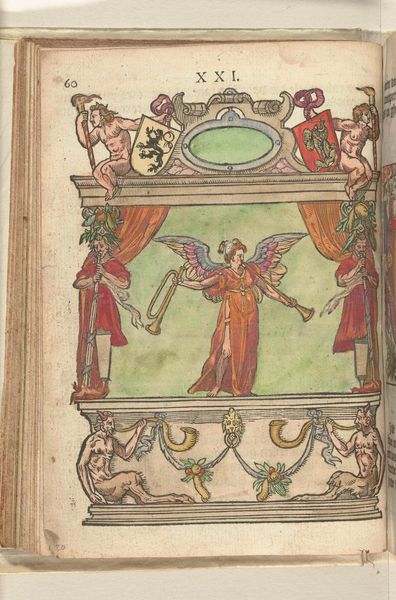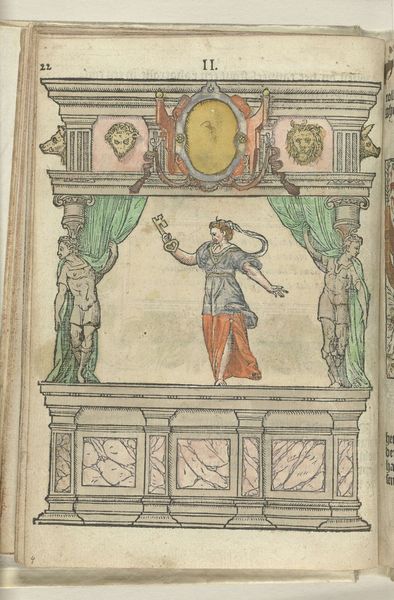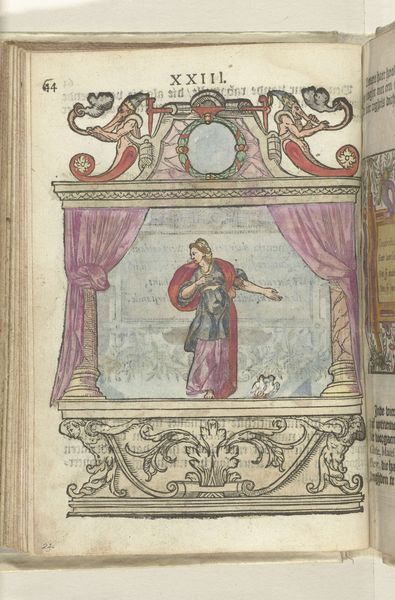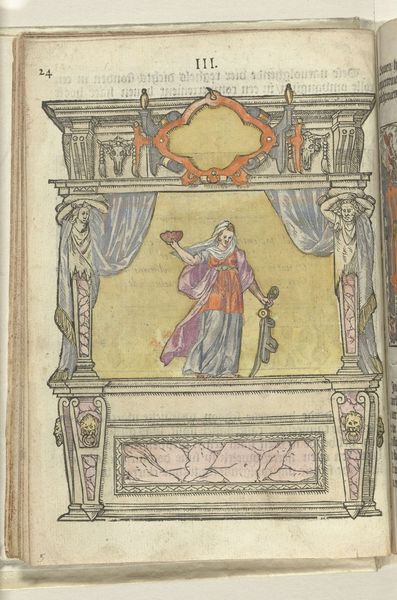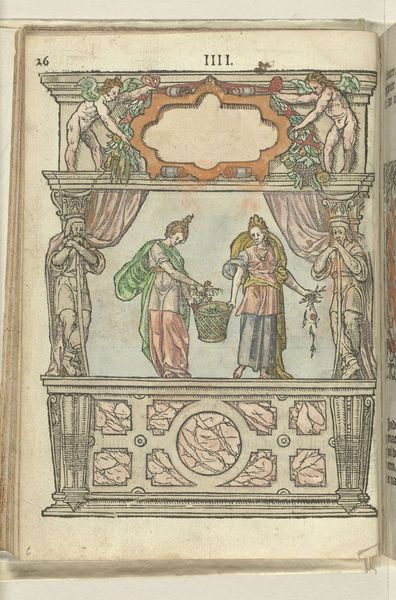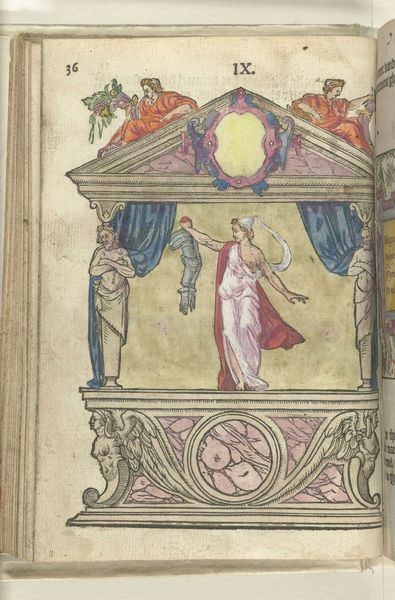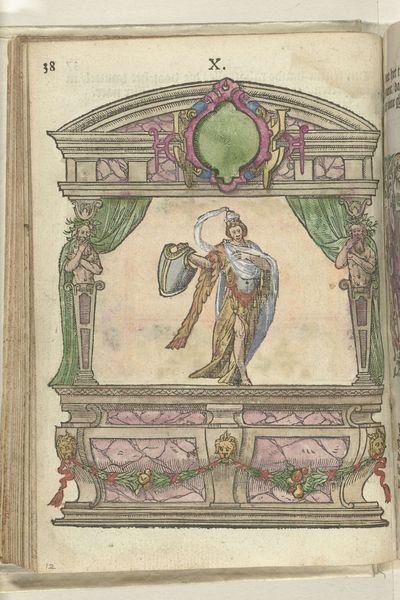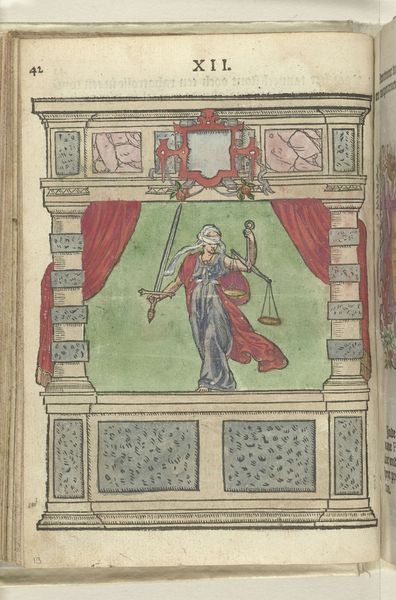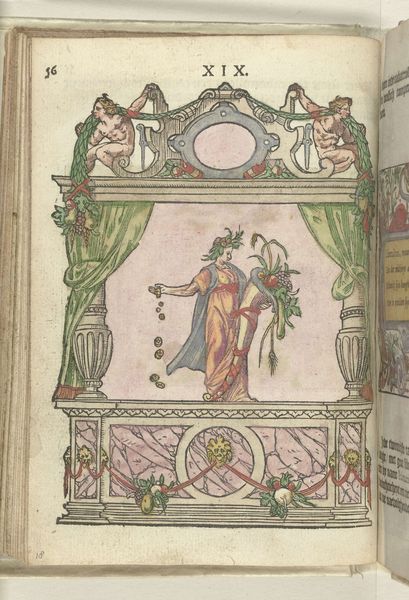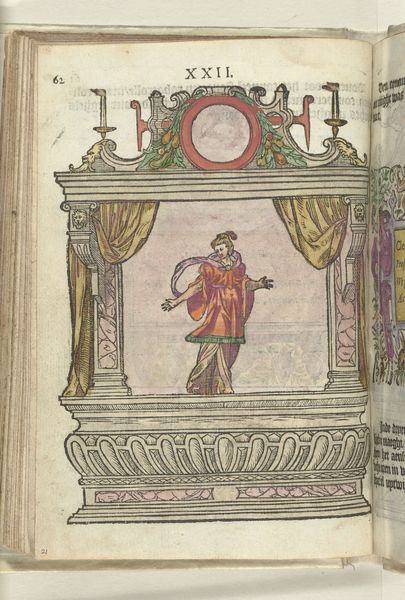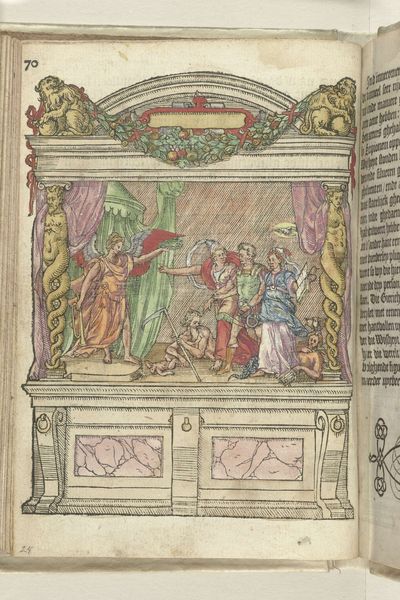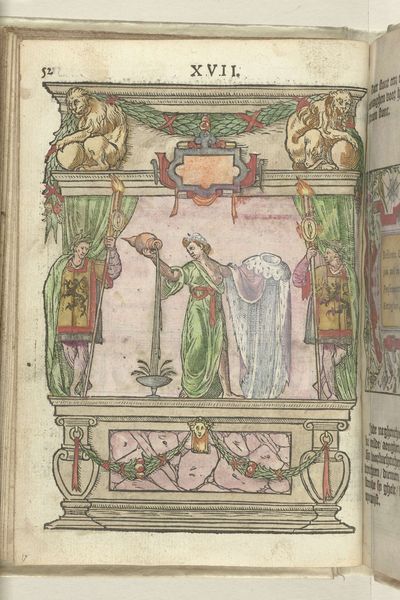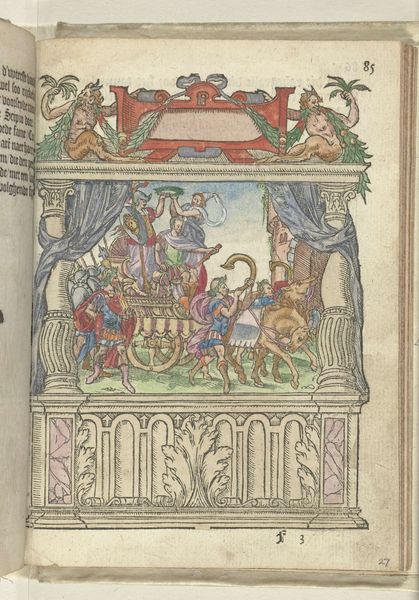
print, engraving
#
allegory
# print
#
figuration
#
form
#
11_renaissance
#
coloured pencil
#
line
#
northern-renaissance
#
engraving
Dimensions: height 155 mm, width 115 mm
Copyright: Rijks Museum: Open Domain
Editor: This engraving, "Toneel met personificatie van de Liefde (Charitas)" made around 1578 by Antoni van Leest, has quite an ornate border framing a tender scene. It's kind of small, nestled within what seems to be a page from a book. What strikes me most is the combination of classical and almost theatrical elements. What do you see in it? Curator: You've hit upon the perfect word – theatrical! To me, it feels as though we’re peering into a little puppet show of virtues, Renaissance style. Doesn't it seem like something plucked from a dream, this stage set inhabited by the personification of love? It's more than just a nice picture; it’s a little world, complete with its own symbolism and nods to classical antiquity. Editor: I see that! It does feel like looking into a dollhouse stage! Are the mythical figures – the sphinxes, satyrs—significant? Curator: Absolutely! They frame and elevate Charitas, which is "divine love" in the context of the painting, setting her apart as more profound, set against common "earthly love," or "Eros". The sphinxes, as guardians of wisdom, support her as if they know that “divine love” knows no bounds; The satyrs holding torches might reference a burning desire. Each figure adds depth to the play, nudging us towards contemplation of Love’s power. What feelings does this evoke for you? Editor: That contrast really clarifies things. The more grounded figures, like the sphinxes, paired with those mischievous satyrs. Knowing about this gives it more depth for sure, makes me think about different ways love shows itself. I wouldn't have noticed all this at first. Curator: Exactly! It just proves, art is so much more exciting when you dig beneath the surface and start peeling back the layers, isn’t it? Editor: For sure. I will definitely carry these newfound insights with me from now on. Thanks for sharing them!
Comments
No comments
Be the first to comment and join the conversation on the ultimate creative platform.
